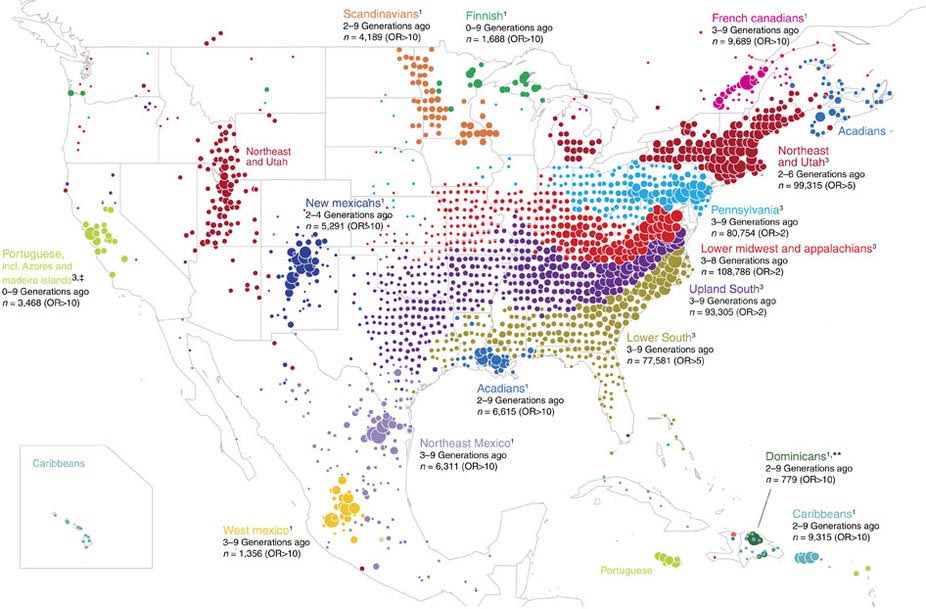
by Laura Knight
~~~
I've received emails from many individuals who are rather desperate to document or even find their upline Knight connections. Many of them have followed erroneous Ancestry.com family tree exemplars in an effort to connect to the Virginia Knights, either Capt. Peter Knight of Northumberland, Peter Knight, Merchant of Gloucester County, or John Knight of Lunenburg. After all, what else is there?
For a time, I, too, was trying desperately to find "homes" for some of these lost Knights, trying to find places to plug them in on one tree or another, but things just didn't work.
Recently, I read the book "Albion's Seed" by historian David Hackett Fischer and the lightbulb went on.
As you may know from reading about Capt. Peter Knight and viewing his record collection on this site, he was among the earliest settlers of Virginia. But this was later in the history of the Jamestown settlement which had officially begun in 1607. More than ten years before the appearance of Peter Knight, Merchant of Gloucester in Virginia, the Puritan migration to New England began.
The first great wave (1629-40) was an exodus of English Puritans mainly from the Eastern Counties of England that made their way to Massachusetts. Unlike the "Pilgrim Fathers" who came over in the Mayflower in 1620, and who were religious Separatists who broke away from the English state Church, the Puritans were still members of the Church of England. It was during the reign of Charles I who the Puritans felt was a bit too Catholic for their tastes.
The Puritans sought to establish a new "Zion", a structured, strict, religious community whose laws reflected Biblical principles.
The second great migration began in 1642 and lasted until about 1675. They fled England because of the English Civil War and were Royalist Aristocrats for the most part, mostly from Kent, Devon, Northamptonshire and Warwickshire in England. They aimed for Virginia and there, they formed a hierarchical, elitist society bringing with them tens of thousands of white "slaves", or "indentured servants" which constituted the majority of the population. They had particular ideas such as the concepts of freedom and independence, minimal government and self-government. During the founding period of the USA, their ideas exerted a huge influence on the U.S. Constitution.
The third migration (1675-1715) was the Friends Migration, the Quakers, mainly from England's North Midlands; Cheshire, Lancashire, Yorkshire, Derbyshire, Staffordshire and Nottinghamshire. The Friends based their settlements on ideas of spiritual equality of all people, including Negroe and Native Americans. Their idea of liberty was based on the Golden Rule and embraced all of humanity. Notably, their idea of "Liberty of Conscience" even applied to ideas they believed to be false; a person still had the right to think and believe what he chose according to his own lights.
Finally, the fourth migration (1717-75), came from the borders of North Britain, the Scottish lowlands, and north Ireland. This group shared a culture of high integrity (honor), deep and long-lasting hatreds, and personal liberty, that had been developed in the constant conditions of war along the borders.
In 1651, a Puritan judged Virginians: “I think they are the farthest from conscience and moral honesty of any such number together in the world.”
Many years later, in 1736, a Virginian, William Byrd II, viewed Puritans with contempt, as some passages in one of his letters show: “They have a great dexterity in palliating a perjury so as to leave no taste of it in the mouth, nor can any people like them slip through a penal statute… A watchful eye must be kept on these foul traders.”
Judging from the Puritans’ and the Virginians’ stated opinions, they hated the Quakers who were said to “pray for their fellow men one day a week, and on them the other six.”
The Quakers, in turn, despised the Puritans in New England. At the end of the 18th century, a Pennsylvanian Quaker labled them as “the flock of Cain.”
Additionally, the Quakers, Puritans and Virginians alike expressed their dislike of the Borderers from the north of Britain by calling them savages, barbarians, “Vandals of America,” an “unlearned and uncivilized part of the human race” and “a spurious race of mortals.” Similarly, the settlers of the backcountry disdained the aforementioned groups. (Fischer, pp. 821-122)
As you might suspect, for the most part, these groups kept to themselves because their cultures and beliefs were so vastly different. That tendency reveals itself in a genetic map of the United States:

See: Albion's Seed Genotyped.
And so, the bottom line is this: if you cannot document your connection upline to Virginia Knights - and there are many who do not belong to that group as shown in the Knight Y-DNA table - then it is very likely because your Knights came in one of the later migrations. If you read through the 1850 and 1860 censuses, you will note that there were a great many people carrying the name who had only freshly arrived from England, Ireland, and elsewhere.
The most important thing to do is get the Y-DNA testing done and join the project so as to be able to sort things out. Then the next thing to do is to figure out which migration you might wish to research. There very well may be records available in England that will help you. With knowledge of the different migrations and their origins, at least you know where to begin searching!
Happy Hunting!